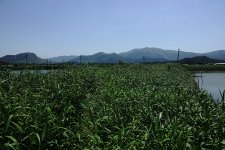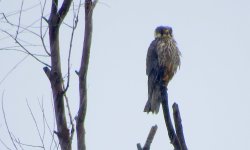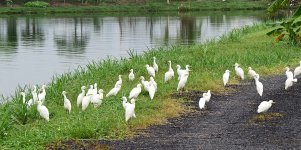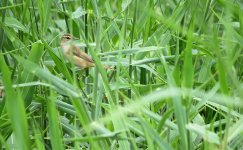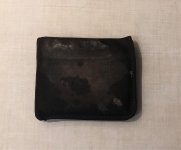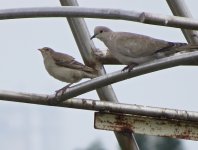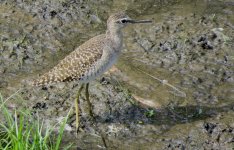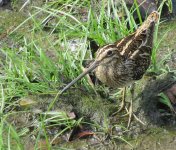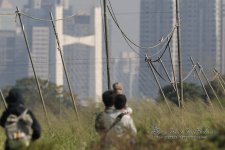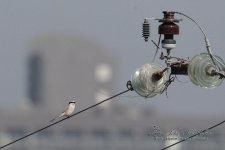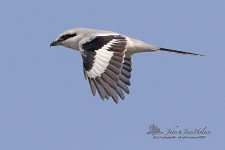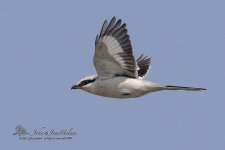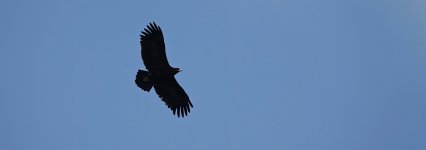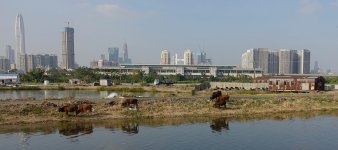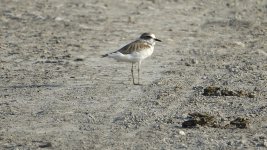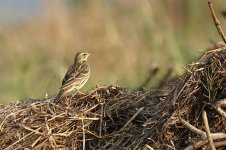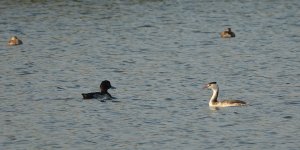-
Welcome to BirdForum, the internet's largest birding community with thousands of members from all over the world. The forums are dedicated to wild birds, birding, binoculars and equipment and all that goes with it.
Please register for an account to take part in the discussions in the forum, post your pictures in the gallery and more.
You are using an out of date browser. It may not display this or other websites correctly.
You should upgrade or use an alternative browser.
You should upgrade or use an alternative browser.
San Tin Fishponds (and beyond), Hong Kong (1 Viewer)
- Thread starter MKinHK
- Start date
More options
Who Replied?MKinHK
Mike Kilburn

Today was the day that the quality started to flow this autumn. This followed a couple of days of easterlies and lower humidity, which also made the birding significantly more pleasant. As I startedYellow-browed, Dusky and Arctic Warblers were calling from the big banyans along the road, and Whiskered Terns were again in evidence foraging over the ponds and a couple of Red Turtle Doves were the first of about 25 birds seen throughout the morning.
While I was checking these out on an overhead wire a couple of smaller starlings dropped in - one of which a White-shouldered Starling and much more exciting the other was a fine male Daurian Starling, with less white on the wing, the typically bland face around its all-dark eye and the dark grey smudge on the back of the neck making for a swift and easy ID. Sadly it was perched close to the home of the only grumpy fishpond operator on the site and I could not get close enough for any pix better than a few record shots, but I was distracted by the first of three Pallas's Grasshopper Warblers which flushed at my feet and dropped down ten feet further on never to be seen again.
This little corner was really hopping - eight or ten Barn Swallows and a solitary Red-rumped Swallow zipped about, while similar number of White-shouldered Starling scrambled about in the meelia tree and a scruffy gaggle of recently fledgedCommon Mynas, four each of winter-plumaged Chinese Pond Heron, mooching Red Turtle Doves and Spotted Doves definitely lowered the tone.
A nearby pond drained to a large puddle made rancid by dead fish was a magnet for 30-odd Cattle Egrets which specialise in picking of the flies and maggots that these odiferous piles spawn, with a few Little Egrets and a couple of Intermediate Egrets, hoping not to be recognised in such unseemly but helpfully similar-looking company, were also loitering with intent. More elegant were four Black-winged Stilts a couple of ponds over, along with a Temminck's Stint that flew up, crossed a bund, and dropped out of sight never to be seen again.
While I was checking these out on an overhead wire a couple of smaller starlings dropped in - one of which a White-shouldered Starling and much more exciting the other was a fine male Daurian Starling, with less white on the wing, the typically bland face around its all-dark eye and the dark grey smudge on the back of the neck making for a swift and easy ID. Sadly it was perched close to the home of the only grumpy fishpond operator on the site and I could not get close enough for any pix better than a few record shots, but I was distracted by the first of three Pallas's Grasshopper Warblers which flushed at my feet and dropped down ten feet further on never to be seen again.
This little corner was really hopping - eight or ten Barn Swallows and a solitary Red-rumped Swallow zipped about, while similar number of White-shouldered Starling scrambled about in the meelia tree and a scruffy gaggle of recently fledgedCommon Mynas, four each of winter-plumaged Chinese Pond Heron, mooching Red Turtle Doves and Spotted Doves definitely lowered the tone.
A nearby pond drained to a large puddle made rancid by dead fish was a magnet for 30-odd Cattle Egrets which specialise in picking of the flies and maggots that these odiferous piles spawn, with a few Little Egrets and a couple of Intermediate Egrets, hoping not to be recognised in such unseemly but helpfully similar-looking company, were also loitering with intent. More elegant were four Black-winged Stilts a couple of ponds over, along with a Temminck's Stint that flew up, crossed a bund, and dropped out of sight never to be seen again.
Attachments
-
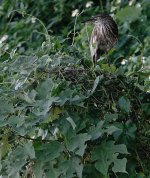 DSC06882 Chinese Pond Heron @ San Tin.jpg222.1 KB · Views: 21
DSC06882 Chinese Pond Heron @ San Tin.jpg222.1 KB · Views: 21 -
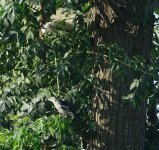 DSC06898 Daurian Starling @ San Tin.JPG1.7 MB · Views: 29
DSC06898 Daurian Starling @ San Tin.JPG1.7 MB · Views: 29 -
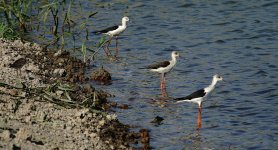 DSC06910 Black-winged Stilt @ San Tin.jpg1.5 MB · Views: 21
DSC06910 Black-winged Stilt @ San Tin.jpg1.5 MB · Views: 21 -
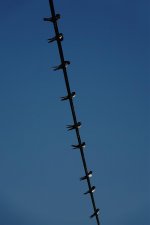 DSC06918 Barn Swallow Satay @ San Tin.jpg30.1 KB · Views: 17
DSC06918 Barn Swallow Satay @ San Tin.jpg30.1 KB · Views: 17 -
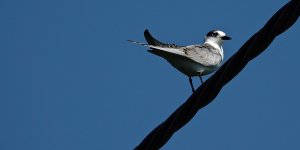 DSC06928 Whiskered Tern @ San Tin.jpg955.4 KB · Views: 14
DSC06928 Whiskered Tern @ San Tin.jpg955.4 KB · Views: 14
Last edited:
MKinHK
Mike Kilburn

This spot is also where I head northwards along a well-grassed bund that often holds good numbers of acrocephalus warblers. I immediately began seeing the first of 30-odd Oriental Reed Warblers, as well as a few Eastern Yellow Wagtails perched on top of the grass, and as I headed on also picked up my first Black-browed Reed Warblers of the autumn plus a second Pallas's Grasshopper Warbler and the odd Zitting Cisticola. One pond was especially birdy - with a wonderful flock of 80 Eastern Yellow Wagtails, three of four Stejneger's Stonechats, plus Wood Green and Common Sandpipers patrolling the water's edge.
A long loop towards the westernmost corner produced my first Brown Shrike of the autumn, a flyover Oriental Turtle Dove, a noisy family of Pied Kingfishers and a hunting Yellow Bittern that was happy to ignore me as it stretched forward down the reed it was hanging from before face-planting in the water as it nailed a fish - great stuff!
Hoping to add some waders on the ponds on the eastern side I headed over to the rickety bridge which has finally given up the ghost and collapsed sideways into the channel. Bummer! This means adding a long extra loop if I want to covert whole site now. Shortly thereafter I realised that my wallet was not in my trousers. Double Bummer! I began retracing my entire route. The waist- and shoulder-high grass on the birdiest bund made my heart sink, as Atlantis, Shergar and Lord Lucan could easily have been in there and remained unhidden!
What I did find was a small gingery acrocephalus warbler that lacked the dark tail and rump and broad black lateral crown stripe of Black-browed Reed Warbler, but instead showed a narrow and wavy black lateral crown stripe above a broad white super that bulged and a mostly pale lower mandible. The choice is between Manchurian Reed Warbler, which is a regular autumn migrant through Hong Kong in small numbers, and which was a patch tick back in January, and the much rarer Paddyfield Warbler, which I have never definitively seen in Hong Kong and only once in China. After making reference to various learned tomes I've gone with Manchurian Reed Warbler, but would be interested to hear any views to the contrary. It was remarkably friendly for an acro, as it's curiosity was greater than its caution and it regularly stayed in view for 20-30 seconds between the maddeningly focus-pulling grass stems, so the pix are disappointing, but in my mind sufficient to clinch it as Manchurian.
Having worked my butt off to find one of these on patch last autumn (only to have one fall memorably and unseasonably into my lap back in January this year) I was chuffed to find one so early in the season and to note how different they are from Black-browed Reed Warblers, which consistently looked more compact and darker on the rump and tail and invariably disappeared into the bottom of the reeds.
Was it worth all the hassle of losing my wallet and replacing everything in it?
Yep.
Cheers
Mike
A long loop towards the westernmost corner produced my first Brown Shrike of the autumn, a flyover Oriental Turtle Dove, a noisy family of Pied Kingfishers and a hunting Yellow Bittern that was happy to ignore me as it stretched forward down the reed it was hanging from before face-planting in the water as it nailed a fish - great stuff!
Hoping to add some waders on the ponds on the eastern side I headed over to the rickety bridge which has finally given up the ghost and collapsed sideways into the channel. Bummer! This means adding a long extra loop if I want to covert whole site now. Shortly thereafter I realised that my wallet was not in my trousers. Double Bummer! I began retracing my entire route. The waist- and shoulder-high grass on the birdiest bund made my heart sink, as Atlantis, Shergar and Lord Lucan could easily have been in there and remained unhidden!
What I did find was a small gingery acrocephalus warbler that lacked the dark tail and rump and broad black lateral crown stripe of Black-browed Reed Warbler, but instead showed a narrow and wavy black lateral crown stripe above a broad white super that bulged and a mostly pale lower mandible. The choice is between Manchurian Reed Warbler, which is a regular autumn migrant through Hong Kong in small numbers, and which was a patch tick back in January, and the much rarer Paddyfield Warbler, which I have never definitively seen in Hong Kong and only once in China. After making reference to various learned tomes I've gone with Manchurian Reed Warbler, but would be interested to hear any views to the contrary. It was remarkably friendly for an acro, as it's curiosity was greater than its caution and it regularly stayed in view for 20-30 seconds between the maddeningly focus-pulling grass stems, so the pix are disappointing, but in my mind sufficient to clinch it as Manchurian.
Having worked my butt off to find one of these on patch last autumn (only to have one fall memorably and unseasonably into my lap back in January this year) I was chuffed to find one so early in the season and to note how different they are from Black-browed Reed Warblers, which consistently looked more compact and darker on the rump and tail and invariably disappeared into the bottom of the reeds.
Was it worth all the hassle of losing my wallet and replacing everything in it?
Yep.
Cheers
Mike
Attachments
-
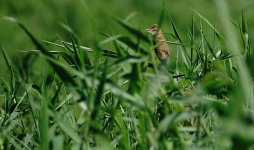 DSC06935 Oriental Reed Warbler @ San Tin.jpg1.4 MB · Views: 17
DSC06935 Oriental Reed Warbler @ San Tin.jpg1.4 MB · Views: 17 -
 DSC06943 Eastern Yellow Wagtail @ San Tin.jpg1.3 MB · Views: 23
DSC06943 Eastern Yellow Wagtail @ San Tin.jpg1.3 MB · Views: 23 -
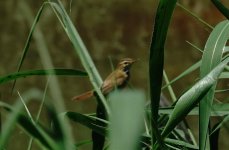 DSC06964 Manchurian Reed Warbler @ San Tin.jpg151.8 KB · Views: 21
DSC06964 Manchurian Reed Warbler @ San Tin.jpg151.8 KB · Views: 21 -
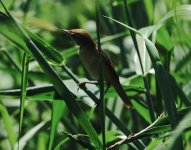 DSC06982 Manchurian Reed Warbler @ San Tin.jpg1.7 MB · Views: 24
DSC06982 Manchurian Reed Warbler @ San Tin.jpg1.7 MB · Views: 24 -
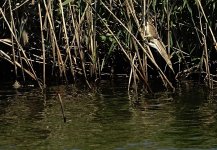 DSC06950 Yellow Bittern @ San Tin.jpg1.5 MB · Views: 23
DSC06950 Yellow Bittern @ San Tin.jpg1.5 MB · Views: 23
Last edited:

So there is a stuffed wallet lying somewhere on a bird-packed bund at a superb locality in Hong Kong ...must be worthy of a visit 
MKinHK
Mike Kilburn

There is. How stuffed will remain a mystery.
There are two suggested search techniques:
1. BYO strimmer, but note that this will destroy the best microhabitat on the site, and possibly the wallet and its contents
2. Poke about endlessly in head high grass
Knock yourselves out!
Cheers
Mike
There are two suggested search techniques:
1. BYO strimmer, but note that this will destroy the best microhabitat on the site, and possibly the wallet and its contents
2. Poke about endlessly in head high grass
Knock yourselves out!
Cheers
Mike
Attachments
Last edited:
MKinHK
Mike Kilburn

On Saturday I was distracted away from San Tin by news of Red-backed Shrike found at Long Valley by John Alcock. In a routine twitch I rocked up and quickly found it hunting a banana field from an overhead wire. It was not at all shy and I was able to get with 20-yards of it without disturbing its hunting and getting some reasonable pix of my 476th Hong Kong species. I've dipped a couple of these over the years so it was nice to have an easy score.
On Sunday I did head back to San Tin where I bumped into John Holmes. Our top birds were a cracking sooty Pied Harrier that was lurking in a meelia tree waiting for a moribund Grey Heron to give up the ghost and a Little Bunting that was just my second of the autumn after the Yellow-breasted Bunting back in August. Hopefully there are a few more to come.
The grassy bunds revealed no dropped wallet, but again held good numbers of 25 Oriental Reed Warblers, ten Black-browed Reed Warblers and a couple of briefly seen others that got the heart pumping but refused to fully cooperate. We did however have one Pallas's Grasshopper Warbler and several Zitting Cisticolas. A couple of Whiskered Terns, 50 or so Red-Turtle Doves and a few Black Drongos and Yellow Wagtails added to the sense of passage, while one semi-drained pond held a rather drab adult Long-toed Stint, two Pacific Golden Plovers, a Marsh Sandpiper, Green Sandpiper and Common Snipe. I also flushed a Swintail Snipe form one of the grassy binds. In all 57 species was a reasonable return for a swift couple of hours in the heat of a daily polluted day, albeit less than the 64 (plus a Common Ratsnake trashing away from my feet with an unfortunate mouse in its jaws) I managed the previous weekend.
Cheers
Mike
On Sunday I did head back to San Tin where I bumped into John Holmes. Our top birds were a cracking sooty Pied Harrier that was lurking in a meelia tree waiting for a moribund Grey Heron to give up the ghost and a Little Bunting that was just my second of the autumn after the Yellow-breasted Bunting back in August. Hopefully there are a few more to come.
The grassy bunds revealed no dropped wallet, but again held good numbers of 25 Oriental Reed Warblers, ten Black-browed Reed Warblers and a couple of briefly seen others that got the heart pumping but refused to fully cooperate. We did however have one Pallas's Grasshopper Warbler and several Zitting Cisticolas. A couple of Whiskered Terns, 50 or so Red-Turtle Doves and a few Black Drongos and Yellow Wagtails added to the sense of passage, while one semi-drained pond held a rather drab adult Long-toed Stint, two Pacific Golden Plovers, a Marsh Sandpiper, Green Sandpiper and Common Snipe. I also flushed a Swintail Snipe form one of the grassy binds. In all 57 species was a reasonable return for a swift couple of hours in the heat of a daily polluted day, albeit less than the 64 (plus a Common Ratsnake trashing away from my feet with an unfortunate mouse in its jaws) I managed the previous weekend.
Cheers
Mike
MKinHK
Mike Kilburn

Thanks Tom - watch this space for more on the wallet!
Afternoon and overnight rain that the weather radar showed would blow through in the next hour had me heading for San Tin on Sunday morning with the highest expectations, especially as Chris Campion had found a juvenile Rosy Starling – which has been recorded less than ten times in Hong Kong - with a bunch of White-cheeked Starlings the day before. With the promise of a birdy day I made sure to give myself every chance to pick up some of the woodland edge species that are principally found in the trees along the access road. It’s a generally undistinguished list; some can be surprisingly tricky here, but they all count: Japanese White-eye, Common Tailorbird, Cinereous Tit (my first of the autumn!) Masked Laughingthrush, Magpie Robin, Yellow-browed and Arctic Warblers, and Azure-winged Magpie,
A fruitless scan of distant treetops for Large-billed Crow did reveal a perched raptor in the tallest tree above the village. The heavily pixelated image from ultra double superzoom of my old Canon SX50 (the zoom of my Sony has seized up and awaits evaluation) revealed whitish ear coverts beneath a dark cap, which suggested a falcon, so I headed through the drizzle in pursuit of better views. What a good move! On the way I picked up four easily missed Sooty-headed Bulbuls, a couple of Black Drongos, a Koel, three Black-naped Orioles and a flyover flock of 18 Silky Starlings – the first of the autumn! A second falcon flying away turned out to be a Hobby, as did the bird in question which was hunched miserably on a snag and allowed my to get to within 50 metres. I was of course hoping for Amur Falcon at this time of year, but the reddish undertail, darker than expected ear coverts, yellow feet and cere and the heaviness of the streaking on the breast effectively closed any avenue of doubt.
Forty-odd Cattle Egrets were exploring the closest pond bund as I entered the fishponds and the species count began to mount rapidly with Great and Little Egrets, Chinese Pond Heron and Night Heron small groups of Little Grebes and the odd Common Sandpiper and Common Kingfisher at the water’s edge or on the water and Collared and Spotted Doves, Crested and Common Mynas and swarms of House Sparrows plus an Amur Wagtail on the path and a Long-tailed Shrike on a wire. As I greeted the dogs, whose still gawky youngsters are nearly full-grown, the first of 100+ Whiskered Terns flew past, a White-throated Kingfisher enlivened the top of a telegraph pole and the first flock of 30–odd Red Turtle Doves huddled on some overhead wires above a drainage channel.
The quality started to emerge around the semi-drained pond with an attractive border of fine green grass. I could hear Dusky and Black-browed Reed Warblers in the weeds, knocked out Zitting Cisticolas and Oriental Reed Warblers, several Eastern Yellow Wagtails bathing in a rain-filled tyre track and was delighted when in quick succession a chunky Chestnut-eared Bunting and a Bluethroat with its distinctively red-sided tail - both first records for the autumn – flew past me and buried itself in the vegetation of an overgrown bund. The pond itself held a dozen Black-winged Stilts, five Wood Sandpipers, a Swintail Snipe and a couple of LRPs. This was looking promising!
Not two minutes later a Black-shouldered Kite – a patch first for me – drifted in from the west and landed on a wire near the copse of large trees in the middle of the site. Promising indeed! It showed on and off for the next hour so as it quartered the whole patch a couple of times hovering close-by. It’s almost sacreligeous to say it of such an elegant bird, but it was actually a bit tatty – the inner primaries on both sides were missing and the secondaries also looked like they were being renewed.
Freshly energized, I began the slog along the grassy bunds that are so good for the more skulking warblers. Twenty-odd Oriental and five or six Black-browed Reed Warblers were typical scores, as were a single Pallas’s Grasshopper Warbler, a first Lancy of the autumn, and the gingery and unexpectedly friendly Manchurian Reed Warbler that’s been around for a couple of weeks now. A couple of Sand Martins flipped over amongst the Barn Swallows.
I was joined by Chris, who had amazingly found my wallet the day before! Not being a reader of this thread he was as surprised as I was! The wallet had acquired an elegant pattern of white mould on the cover and was a bit damp, but otherwise ok. My beloved informs me that rubbing alcohol should deal with the mould, so it may shortly be back in operation.
More to come ...
Cheers
Mike
Afternoon and overnight rain that the weather radar showed would blow through in the next hour had me heading for San Tin on Sunday morning with the highest expectations, especially as Chris Campion had found a juvenile Rosy Starling – which has been recorded less than ten times in Hong Kong - with a bunch of White-cheeked Starlings the day before. With the promise of a birdy day I made sure to give myself every chance to pick up some of the woodland edge species that are principally found in the trees along the access road. It’s a generally undistinguished list; some can be surprisingly tricky here, but they all count: Japanese White-eye, Common Tailorbird, Cinereous Tit (my first of the autumn!) Masked Laughingthrush, Magpie Robin, Yellow-browed and Arctic Warblers, and Azure-winged Magpie,
A fruitless scan of distant treetops for Large-billed Crow did reveal a perched raptor in the tallest tree above the village. The heavily pixelated image from ultra double superzoom of my old Canon SX50 (the zoom of my Sony has seized up and awaits evaluation) revealed whitish ear coverts beneath a dark cap, which suggested a falcon, so I headed through the drizzle in pursuit of better views. What a good move! On the way I picked up four easily missed Sooty-headed Bulbuls, a couple of Black Drongos, a Koel, three Black-naped Orioles and a flyover flock of 18 Silky Starlings – the first of the autumn! A second falcon flying away turned out to be a Hobby, as did the bird in question which was hunched miserably on a snag and allowed my to get to within 50 metres. I was of course hoping for Amur Falcon at this time of year, but the reddish undertail, darker than expected ear coverts, yellow feet and cere and the heaviness of the streaking on the breast effectively closed any avenue of doubt.
Forty-odd Cattle Egrets were exploring the closest pond bund as I entered the fishponds and the species count began to mount rapidly with Great and Little Egrets, Chinese Pond Heron and Night Heron small groups of Little Grebes and the odd Common Sandpiper and Common Kingfisher at the water’s edge or on the water and Collared and Spotted Doves, Crested and Common Mynas and swarms of House Sparrows plus an Amur Wagtail on the path and a Long-tailed Shrike on a wire. As I greeted the dogs, whose still gawky youngsters are nearly full-grown, the first of 100+ Whiskered Terns flew past, a White-throated Kingfisher enlivened the top of a telegraph pole and the first flock of 30–odd Red Turtle Doves huddled on some overhead wires above a drainage channel.
The quality started to emerge around the semi-drained pond with an attractive border of fine green grass. I could hear Dusky and Black-browed Reed Warblers in the weeds, knocked out Zitting Cisticolas and Oriental Reed Warblers, several Eastern Yellow Wagtails bathing in a rain-filled tyre track and was delighted when in quick succession a chunky Chestnut-eared Bunting and a Bluethroat with its distinctively red-sided tail - both first records for the autumn – flew past me and buried itself in the vegetation of an overgrown bund. The pond itself held a dozen Black-winged Stilts, five Wood Sandpipers, a Swintail Snipe and a couple of LRPs. This was looking promising!
Not two minutes later a Black-shouldered Kite – a patch first for me – drifted in from the west and landed on a wire near the copse of large trees in the middle of the site. Promising indeed! It showed on and off for the next hour so as it quartered the whole patch a couple of times hovering close-by. It’s almost sacreligeous to say it of such an elegant bird, but it was actually a bit tatty – the inner primaries on both sides were missing and the secondaries also looked like they were being renewed.
Freshly energized, I began the slog along the grassy bunds that are so good for the more skulking warblers. Twenty-odd Oriental and five or six Black-browed Reed Warblers were typical scores, as were a single Pallas’s Grasshopper Warbler, a first Lancy of the autumn, and the gingery and unexpectedly friendly Manchurian Reed Warbler that’s been around for a couple of weeks now. A couple of Sand Martins flipped over amongst the Barn Swallows.
I was joined by Chris, who had amazingly found my wallet the day before! Not being a reader of this thread he was as surprised as I was! The wallet had acquired an elegant pattern of white mould on the cover and was a bit damp, but otherwise ok. My beloved informs me that rubbing alcohol should deal with the mould, so it may shortly be back in operation.
More to come ...
Cheers
Mike
Attachments
Last edited:
MKinHK
Mike Kilburn

We headed towards the spot Chris had found the Rosy Starling the day before, picking up a Brown Shrike and both Spotted and White-rumped Munias feeding on grass heads along the access road to the reserve. Four flyover White-cheeked Starlings were immediately scanned for the scruff, making me twitchy that another such group – including the scruff – could fly past on the other side of the eight-foot fence that borders the reserve. Heading towards the spot Chris had seen it yesterday we flushed a juvenile Moorhen and found a group of at least 120 Red Turtle Doves gorging on soya meal or digesting it in the nearby trees.
Fishpond operation is a pretty low margin business so the fish are fed on whatever stale bread, cat food, soya or anything else that is going cheap or lost track of the back of its lorry. All these odiferous goodies are heaped on the banks and shoveled at appropriate intervals into the ponds for the mullet and carp to enjoy. As they moulder they attract hordes of flies, which in turn attract the birds. Yesterday a three-foot high pile of sliced white bread had been the plat du jour for the scruff, but Chris picked it up in a flock of Black-necked Starlings, Crested Mynas and Collared Doves that poured out of a tree – and landed on one of the dodgy wires that provides power for the water pumps around the site. This was helpfully next to yesterday’s pile of white bread, which is incongruously marked by a small beached speedboat topped an elaborate tube metal frame.
As it flew in the Rosy Starling looked immediately pale and sandy, especially on the rump, which was clearly lighter than the wings and tail. This is important because immature Common Starlings are also rather brownish, but lack both the sandy tones and the contrasting rump. Perched on the wire and then the speedboat the other features were more apparent – the dark eye in a plain face, mostly yellow bill with a dark culmen, and pinkish feet. Scruffy though it undoubtedly is I was delighted to add Rosy Starling to my patch list. My first was another scruffy juvenile that was found and identified by an elderly Japanese lady who was part of a group I guided back in 1994. That bird was a major blocker as it was only the second Hong Kong record – and not seen by any other birders.
As we headed back to try to relocate the Manchurian Reed Warbler a falcon flying away from us showed not quite enough for us to confirm it as Amur, although the slower flight and less pointed wings made it highly probable that it was one – the date and the early rain making it a distinct possibility. The Manchurian Reed Warbler duly performed, and a flyover tern showed a slimmer bill, more pointed wings and smaller size to add a patch tick Little Tern to the day’s quality birds. I also picked up my solitary Intermediate Egret of the day. Common Snipe and Temminck’s Stints came up from the edge of a small pond, and six Pacific Golden Plovers had lingered of the eight Chris had seen the day before.
Single Richard’s and Red-throated Pipits were at the same spot Chris had seen them earlier, while the first Wryneck and Siberian Rubythroat of the autumn emerging from the remains of some burned-off reeds added another sprinkling of stardust.
On a day that that just would not quit a final slog through the tall grass around the pond with submerged grass delivered three Yellow Bitterns, a juvenile Purple Heron and a typically striking Pheasant-tailed Jacana! On my way out a Greenshank, a Spotted Redshank, a Common Teal and two Grey Wagtails on the Main Drainage Channel left me with a terrific 90 species, which was agonizingly one short of my one-day record! But with such excellent quality appearing throughout the day, it really didn’t matter at all!
Cheers
Mike
Fishpond operation is a pretty low margin business so the fish are fed on whatever stale bread, cat food, soya or anything else that is going cheap or lost track of the back of its lorry. All these odiferous goodies are heaped on the banks and shoveled at appropriate intervals into the ponds for the mullet and carp to enjoy. As they moulder they attract hordes of flies, which in turn attract the birds. Yesterday a three-foot high pile of sliced white bread had been the plat du jour for the scruff, but Chris picked it up in a flock of Black-necked Starlings, Crested Mynas and Collared Doves that poured out of a tree – and landed on one of the dodgy wires that provides power for the water pumps around the site. This was helpfully next to yesterday’s pile of white bread, which is incongruously marked by a small beached speedboat topped an elaborate tube metal frame.
As it flew in the Rosy Starling looked immediately pale and sandy, especially on the rump, which was clearly lighter than the wings and tail. This is important because immature Common Starlings are also rather brownish, but lack both the sandy tones and the contrasting rump. Perched on the wire and then the speedboat the other features were more apparent – the dark eye in a plain face, mostly yellow bill with a dark culmen, and pinkish feet. Scruffy though it undoubtedly is I was delighted to add Rosy Starling to my patch list. My first was another scruffy juvenile that was found and identified by an elderly Japanese lady who was part of a group I guided back in 1994. That bird was a major blocker as it was only the second Hong Kong record – and not seen by any other birders.
As we headed back to try to relocate the Manchurian Reed Warbler a falcon flying away from us showed not quite enough for us to confirm it as Amur, although the slower flight and less pointed wings made it highly probable that it was one – the date and the early rain making it a distinct possibility. The Manchurian Reed Warbler duly performed, and a flyover tern showed a slimmer bill, more pointed wings and smaller size to add a patch tick Little Tern to the day’s quality birds. I also picked up my solitary Intermediate Egret of the day. Common Snipe and Temminck’s Stints came up from the edge of a small pond, and six Pacific Golden Plovers had lingered of the eight Chris had seen the day before.
Single Richard’s and Red-throated Pipits were at the same spot Chris had seen them earlier, while the first Wryneck and Siberian Rubythroat of the autumn emerging from the remains of some burned-off reeds added another sprinkling of stardust.
On a day that that just would not quit a final slog through the tall grass around the pond with submerged grass delivered three Yellow Bitterns, a juvenile Purple Heron and a typically striking Pheasant-tailed Jacana! On my way out a Greenshank, a Spotted Redshank, a Common Teal and two Grey Wagtails on the Main Drainage Channel left me with a terrific 90 species, which was agonizingly one short of my one-day record! But with such excellent quality appearing throughout the day, it really didn’t matter at all!
Cheers
Mike
Attachments
Last edited:
JWN Andrewes
Poor Judge of Pasta.
Fabulous day there Mike. Actually looks pretty tidy for a Pink Stink. Certainly not as scruffy as your wallet!

Impressed by the wallet find! Not bad birds too 
MKinHK
Mike Kilburn

Many thanks gents - sounds like the wallet needs it own Instagram account!
Chris went for option 3: find it in a place where it is easily seen if you're not blind. Hejust came across it in a spot near the rickety bridge that I had passed at least three times in my search - and very close to where I realised it was gone!
Actually my wallets lead interesting lives:
Stay tuned to see how it responded to the rubbing alcohol . . .
Cheers
Mike
Chris went for option 3: find it in a place where it is easily seen if you're not blind. Hejust came across it in a spot near the rickety bridge that I had passed at least three times in my search - and very close to where I realised it was gone!
Actually my wallets lead interesting lives:
- One I lost came back via CID because either the taxi driver or the passenger that found had it on them when picked up in a police investigation. Others have visited two other different police stations in various parts of Hong Kong.
- Another was found in a cab by an English squash player in Hong Kong for a ranking tournament. He went to the trouble to find me by digging through it for information on who it might belong to, and finding my email address online!
- I left another in a taxi in Jordan after a big argument with the driver about the fare after he got lost taking me to Amman National Park. A truly decent man, he drove back to find me when he saw it in the back of the cab - rather than abandon me in the park with no way of getting back!
- They also hide themselves in the flat on a regular basis, but only ever when I am in a rush or already late. I will have no truck with the argument that this might be their attempt at self-preservation!
Stay tuned to see how it responded to the rubbing alcohol . . .
Cheers
Mike
Last edited:
MKinHK
Mike Kilburn

Couldn't have put it better myself John!
A latish start on a sunny day with a blessedly cool easterly breeze delivered a decent but unspectacular 79-odd species yesterday. The Great Cormorants have arrived in numbers, provoking my friendly fishpond operator to grumble - not without justification - about how many fish they take. It was nice to see them at the same time as around 50 Whiskered Terns in plumages ranging from scaly-backed juveniles to fading breeders and winter adults remained on site - reflecting the overlapping transition from autumn to winter.
It was also a good day for warbler passage - with 35 Black-browed and 30-odd Oriental Reed Warblers, plus 50-odd Dusky Warblers. Among there were single Zitting Cisticolas, a Pallas's Grasshopper Warbler and an intriguing slightly smaller olive-toned locustella - that was in all probability a Lanceolated Warbler, but was interesting enough to have me wondering about Grasshopper Warbler. This has never occurred in Hong Kong, but breeding in NE Xinjiang and into Mongolia, so is definitely one to watch out for.
Other decent passerine migrants were two and three Richard's Pipits, two Red-throated Pipits, five ocularis White Wagtails three Yellow-breasted Buntings and the same Chestnut-eared Bunting from a couple of weeks earlier, two Olive-backed Pipits and a Taiga Flycatcher on the approach to Lok Ma Chau reserve, which also held anButtonquail sp. with rather faint yellow patch on the forewing, but didn't show its legs, which meant it stayed unidentified.
On a good day for arriving raptors I had male and female Eurasian Kestrels, two Eastern Buzzards and two high Amur Falcons. Other arrivals included 40-odd Eurasian Teals, two Shovelers and a solitary Tufted Duck, while I was pleased so see one of the two Pheasant-Tailed Jacanas actually walking on floating vegetation - the first time I've seen this Hong Kong. Other waders adding to the wintry feeling were 30-odd Avocets and seven Temminck's Stints, which seem to have been hiding for the last month or so. Three Pacific Golden Plovers, two each of Swintail and Common Snipes, plus two Greenshanks and the usual Wood, Green and Common Sandpipers, Black-winged Stilts and LRPs completed the waders.
Starlign numbers are starting to build - there were 100-odd Silky Starlings, 50 White-cheeked Starlings and 20 White-shouldered Starlings including one unfortunately bird that had been dyed orange tin either Vietnam or Thailand, before escaping and making it way to Hong Kong. The other highlight of the morning was three Siberian Rubythroats all of which were skulking in cover close to the nature reserve.
Cheers
Mike
A latish start on a sunny day with a blessedly cool easterly breeze delivered a decent but unspectacular 79-odd species yesterday. The Great Cormorants have arrived in numbers, provoking my friendly fishpond operator to grumble - not without justification - about how many fish they take. It was nice to see them at the same time as around 50 Whiskered Terns in plumages ranging from scaly-backed juveniles to fading breeders and winter adults remained on site - reflecting the overlapping transition from autumn to winter.
It was also a good day for warbler passage - with 35 Black-browed and 30-odd Oriental Reed Warblers, plus 50-odd Dusky Warblers. Among there were single Zitting Cisticolas, a Pallas's Grasshopper Warbler and an intriguing slightly smaller olive-toned locustella - that was in all probability a Lanceolated Warbler, but was interesting enough to have me wondering about Grasshopper Warbler. This has never occurred in Hong Kong, but breeding in NE Xinjiang and into Mongolia, so is definitely one to watch out for.
Other decent passerine migrants were two and three Richard's Pipits, two Red-throated Pipits, five ocularis White Wagtails three Yellow-breasted Buntings and the same Chestnut-eared Bunting from a couple of weeks earlier, two Olive-backed Pipits and a Taiga Flycatcher on the approach to Lok Ma Chau reserve, which also held anButtonquail sp. with rather faint yellow patch on the forewing, but didn't show its legs, which meant it stayed unidentified.
On a good day for arriving raptors I had male and female Eurasian Kestrels, two Eastern Buzzards and two high Amur Falcons. Other arrivals included 40-odd Eurasian Teals, two Shovelers and a solitary Tufted Duck, while I was pleased so see one of the two Pheasant-Tailed Jacanas actually walking on floating vegetation - the first time I've seen this Hong Kong. Other waders adding to the wintry feeling were 30-odd Avocets and seven Temminck's Stints, which seem to have been hiding for the last month or so. Three Pacific Golden Plovers, two each of Swintail and Common Snipes, plus two Greenshanks and the usual Wood, Green and Common Sandpipers, Black-winged Stilts and LRPs completed the waders.
Starlign numbers are starting to build - there were 100-odd Silky Starlings, 50 White-cheeked Starlings and 20 White-shouldered Starlings including one unfortunately bird that had been dyed orange tin either Vietnam or Thailand, before escaping and making it way to Hong Kong. The other highlight of the morning was three Siberian Rubythroats all of which were skulking in cover close to the nature reserve.
Cheers
Mike
MKinHK
Mike Kilburn

Last Saturday a visit to San Tin with my neighbour heralded the return of the spoonbills - one of my favourite things about winter birding in Hong Kong. The globally threatened Black-faced Spoonbill predominates here, but the first bird to come past us was a first winter Eurasian Spoonbill that circled over with intent to drop onto the drained pond we were standing next to. Seven Black-faced Spoonbills appeared soon after and dropped onto the pond where several Black-winged Stilts foraged in the shallows and eight Temminck's Stints lurked on the edges.
Other new arrivals for the winter included an adult Great Spotted Eagle, a fine male Daurian Redstart, and less demonic, but nonetheless welcome a female Black-faced Bunting. A solitary Yellow-breasted Bunting, two Little Buntings, a Bluethroat added to the regular passage of Dusky, Oriental and Black-browed Reed Warblers and I was disappointed not hear but secure confirmatory views of a suspected Manchurian Reed Warbler that gave it's distinctive harsh call before disappearing without trace into a pondside tangle.
I was pleased to still find a juvenile Yellow Bittern this late in the year and equally so that 30-odd Whiskered Terns were still enjoying the fishponds, many in well marked juvenile plumage.
Yesterday I was briefly back at San Tin, but only for 40-odd minutes between two attempts to twitch Hong Kong's first Chinese Grey Shrike. The bird had appeared in another area of fishponds close to the Mai Po access road on Tuesday, but being away in Chicago I once again joined the ranks of the "Weekday Worriers" (see this post for a definition) as I retuned early on Friday morning and could not go until the next morning.
I arrived just as the bird flew off high towards Mai Po, as it had done on several previous mornings, and after 90 minutes of fruitless searching in the fishponds just outside the reserve I gave it up as a bad job and was kindly dropped at San Tin by Graham Talbot. The short forty minutes I was there provided a fine reminder of just how rich San Tin is, as I saw an amazing 58 species before receiving a WhatsApp message that the shrike had returned and hurrying back to the Mai Po access road.Best among these were a small influx of Marsh Sandpipers and Eurasian Teals and a solitary Grey Wagtail round the back of the San Tin Flood Relief Pond.
My second effort was better rewarded as I pitched up to immediately see the Chinese Grey Shrike perched on an overhead wire just where John Holmes had sent a follow-up WhatsApp to say it would be. And what cracker it was - a beautiful white and pearl grey beauty with a slim black mask, all-dark bill and diagnostically long tail. Unfortunately, owing to the wind blowing the flank feathers up I could not see the pattern on the folded wing, but when it was inevitably flushed as a phalanx of photographers crept ever-closer the extensive white in the wing added further confirmation that this was not one of the other larger grey-tailed shrikes that could conceivably occur here. John's excellent photos (posted here with his permission) of the bird in flight show every detail one could wish for.
In closing respect is due to Chris Campion, who resisted the call of the shrike and smashed the San Tin patch record of 91 - scoring an excellent 97 species both on Saturday and today. The ton surely beckons . . .
Cheers
Mike
Other new arrivals for the winter included an adult Great Spotted Eagle, a fine male Daurian Redstart, and less demonic, but nonetheless welcome a female Black-faced Bunting. A solitary Yellow-breasted Bunting, two Little Buntings, a Bluethroat added to the regular passage of Dusky, Oriental and Black-browed Reed Warblers and I was disappointed not hear but secure confirmatory views of a suspected Manchurian Reed Warbler that gave it's distinctive harsh call before disappearing without trace into a pondside tangle.
I was pleased to still find a juvenile Yellow Bittern this late in the year and equally so that 30-odd Whiskered Terns were still enjoying the fishponds, many in well marked juvenile plumage.
Yesterday I was briefly back at San Tin, but only for 40-odd minutes between two attempts to twitch Hong Kong's first Chinese Grey Shrike. The bird had appeared in another area of fishponds close to the Mai Po access road on Tuesday, but being away in Chicago I once again joined the ranks of the "Weekday Worriers" (see this post for a definition) as I retuned early on Friday morning and could not go until the next morning.
I arrived just as the bird flew off high towards Mai Po, as it had done on several previous mornings, and after 90 minutes of fruitless searching in the fishponds just outside the reserve I gave it up as a bad job and was kindly dropped at San Tin by Graham Talbot. The short forty minutes I was there provided a fine reminder of just how rich San Tin is, as I saw an amazing 58 species before receiving a WhatsApp message that the shrike had returned and hurrying back to the Mai Po access road.Best among these were a small influx of Marsh Sandpipers and Eurasian Teals and a solitary Grey Wagtail round the back of the San Tin Flood Relief Pond.
My second effort was better rewarded as I pitched up to immediately see the Chinese Grey Shrike perched on an overhead wire just where John Holmes had sent a follow-up WhatsApp to say it would be. And what cracker it was - a beautiful white and pearl grey beauty with a slim black mask, all-dark bill and diagnostically long tail. Unfortunately, owing to the wind blowing the flank feathers up I could not see the pattern on the folded wing, but when it was inevitably flushed as a phalanx of photographers crept ever-closer the extensive white in the wing added further confirmation that this was not one of the other larger grey-tailed shrikes that could conceivably occur here. John's excellent photos (posted here with his permission) of the bird in flight show every detail one could wish for.
In closing respect is due to Chris Campion, who resisted the call of the shrike and smashed the San Tin patch record of 91 - scoring an excellent 97 species both on Saturday and today. The ton surely beckons . . .
Cheers
Mike
Attachments
Last edited:

Mouthwatering stuff, keep some birds for later in the season 
Owen Krout
Well-known member

Fantastic day, Mike! That first paragraph alone would have made for a banner day here for me!
MKinHK
Mike Kilburn

Thanks Owen!
We're on an upward trend at present Jos . . .
A late start on Saturday meant that I didn't arrive until around 10am when the day was already warming up. Aware that Chris was probably out and going for the ton had me checking for Grey Wagtail at the stinky ditch behind the flood relief pond, but I had no luck, although I did hear calling Chinese Blackbird. I also struggled for the woodland/shrubland birds the road can provide, and it was not until I found four rather late Whiskered Terns loafing on an aerating machine that I started to score on the ponds.
I heard from other birders who were leaving about quality in the shape of Rustic Bunting, Black-shouldered Kite, Common Starling and Himalayan Swiftlet. I dipped on the swiftlet and the bunting, but connected on the other two - the former perched on a distant wire near the Manchurian Reed Warbler bund while the Common Starlings cooperated with a fly-by just as I came up with Chris, Graham and the Woodwards taking a break under the big trees in the middle where an Asian Brown Flycatcher was failing to respond and I also heard about a Northern Lapwing that I also failed to connect with.
Moving on I was delighted to find a female Citrine Wagtail. It was a beautiful blend of whites and pearly greys, with just a hint of yellow beginning to show around the bill. It was foraging in a loose group of Amur Wagtails and taivana Eastern Yellow Wagtails, but showed the full suite of diagnostics - super curved round the ear coverts, broad white wing bars, pure white vent, of a first winter bird that has lost the black breast collar.
After a fruitless attempt to find the Rustic Bunting I went to the far NW corner of the site a followed the path round the back of the nature reserve, where a Taiga Flycatcher called without showing, but the Siberian Rubythroats, if present, were uncharacteristically shy. While pishing pointlessly a bird flying along the tops of the trees along the border road caught my attention. Initially I thought it was a Black-winged Cuckooshrike, but as I got the bins onto a white rump, brown back and a flash of blue in a black wing there could be only one species - Eurasian Jay! While they are widespread across Eurasia from Japan to the UK there have been only ten or so records in Hong Kong in the last 20 years - making this a tremendous patch tick. It is not however the first for San Tin - one was seen here in 2014.
Also in this part of the site I was delighted to pick up the three Common Starlings I had seen earlier on the speedboat that had hosted the Rosy Starling a few weeks ago.
More to come ...
Cheers
Mike
We're on an upward trend at present Jos . . .
A late start on Saturday meant that I didn't arrive until around 10am when the day was already warming up. Aware that Chris was probably out and going for the ton had me checking for Grey Wagtail at the stinky ditch behind the flood relief pond, but I had no luck, although I did hear calling Chinese Blackbird. I also struggled for the woodland/shrubland birds the road can provide, and it was not until I found four rather late Whiskered Terns loafing on an aerating machine that I started to score on the ponds.
I heard from other birders who were leaving about quality in the shape of Rustic Bunting, Black-shouldered Kite, Common Starling and Himalayan Swiftlet. I dipped on the swiftlet and the bunting, but connected on the other two - the former perched on a distant wire near the Manchurian Reed Warbler bund while the Common Starlings cooperated with a fly-by just as I came up with Chris, Graham and the Woodwards taking a break under the big trees in the middle where an Asian Brown Flycatcher was failing to respond and I also heard about a Northern Lapwing that I also failed to connect with.
Moving on I was delighted to find a female Citrine Wagtail. It was a beautiful blend of whites and pearly greys, with just a hint of yellow beginning to show around the bill. It was foraging in a loose group of Amur Wagtails and taivana Eastern Yellow Wagtails, but showed the full suite of diagnostics - super curved round the ear coverts, broad white wing bars, pure white vent, of a first winter bird that has lost the black breast collar.
After a fruitless attempt to find the Rustic Bunting I went to the far NW corner of the site a followed the path round the back of the nature reserve, where a Taiga Flycatcher called without showing, but the Siberian Rubythroats, if present, were uncharacteristically shy. While pishing pointlessly a bird flying along the tops of the trees along the border road caught my attention. Initially I thought it was a Black-winged Cuckooshrike, but as I got the bins onto a white rump, brown back and a flash of blue in a black wing there could be only one species - Eurasian Jay! While they are widespread across Eurasia from Japan to the UK there have been only ten or so records in Hong Kong in the last 20 years - making this a tremendous patch tick. It is not however the first for San Tin - one was seen here in 2014.
Also in this part of the site I was delighted to pick up the three Common Starlings I had seen earlier on the speedboat that had hosted the Rosy Starling a few weeks ago.
More to come ...
Cheers
Mike
Attachments
-
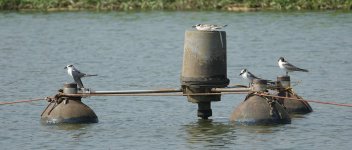 DSC09978 Whiskered Terns @ San Tin.jpg1,013.9 KB · Views: 14
DSC09978 Whiskered Terns @ San Tin.jpg1,013.9 KB · Views: 14 -
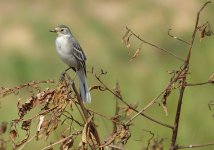 DSC00002 Citrine Wagtail @ San Tin.jpg1.4 MB · Views: 32
DSC00002 Citrine Wagtail @ San Tin.jpg1.4 MB · Views: 32 -
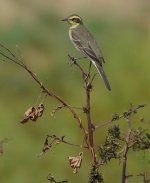 DSC09984 Eastern Yellow Wagtail @ San Tin.jpg96.5 KB · Views: 22
DSC09984 Eastern Yellow Wagtail @ San Tin.jpg96.5 KB · Views: 22 -
 DSC00004 Eurasian Jay @ San Tin.jpg114.8 KB · Views: 27
DSC00004 Eurasian Jay @ San Tin.jpg114.8 KB · Views: 27 -
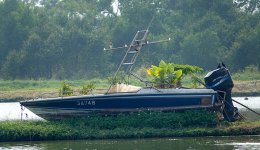 DSC00019 Starling speedboat @ San Tin.jpg1.3 MB · Views: 16
DSC00019 Starling speedboat @ San Tin.jpg1.3 MB · Views: 16
MKinHK
Mike Kilburn

After starting my turn towards home a pair of Mallards - another patch tick - flew over my head and into the reserve. they were part of a sudden flurry of ducks, which also included a few dozen Common Teal, two Tufted Ducks, single figures of Garganey, Wigeon, Shoveler, Pintail and a pair of Falcated Ducks that were hiding the long grass in one of the ponds. I suspect they all appeared owing to disturbance from the adult Greater Spotted Eagle which flew up from a tree close to where I had seen the Eurasian Jay. The grassy beds here also revealed three or four Black-Browed Reed Warblers, plus singleton Yellow-breasted, Black-faced and Chestnut-eared Buntings (which for those of you following the UK rarities thread really look nothing like Little Buntings!).
Moving over to the eastern side of the patch I was surprised to see that six cows and a herd of goats have now taken up residence - presumably to keep the vegetation in check. It will be interesting to see how they affect the site in the coming months. This corner produced a single Kentish Plover in a gathering of a dozen LRPs and I again saw one of the Common Starlings among the large numbers of White-cheeked, Silky and Chinese Starlings (plus Red and Oriental Turtle Doves in the trees along the near edge of the reserve. Another pond held half a dozen Red-throated Pipits, and the two Little Buntings amongst them made a decently autumnal four bunting species on the day.
The final ponds produced a solitary Great Crested Grebe amongst forty or so Tufted Ducks, a fine male Eurasian Kestrel, a hunting Besra and an Olive-backed Pipit. I'm still waiting for the water level in the Main Drainage Channel to drop, bu the top end still held a few Black-winged Stilts, Wood, Common and Green Sandpipers and best of all a pair of Grey Wagtails which gave me a wonderful new personal record of 95 species!
As good as this seems it still fell short of Chris's 98 of the previous weekend, and his even better 104 species the same day! Not bad for 30-odd hectares of fishponds!
Cheers
Mike
Moving over to the eastern side of the patch I was surprised to see that six cows and a herd of goats have now taken up residence - presumably to keep the vegetation in check. It will be interesting to see how they affect the site in the coming months. This corner produced a single Kentish Plover in a gathering of a dozen LRPs and I again saw one of the Common Starlings among the large numbers of White-cheeked, Silky and Chinese Starlings (plus Red and Oriental Turtle Doves in the trees along the near edge of the reserve. Another pond held half a dozen Red-throated Pipits, and the two Little Buntings amongst them made a decently autumnal four bunting species on the day.
The final ponds produced a solitary Great Crested Grebe amongst forty or so Tufted Ducks, a fine male Eurasian Kestrel, a hunting Besra and an Olive-backed Pipit. I'm still waiting for the water level in the Main Drainage Channel to drop, bu the top end still held a few Black-winged Stilts, Wood, Common and Green Sandpipers and best of all a pair of Grey Wagtails which gave me a wonderful new personal record of 95 species!
As good as this seems it still fell short of Chris's 98 of the previous weekend, and his even better 104 species the same day! Not bad for 30-odd hectares of fishponds!
Cheers
Mike
Attachments
Users who are viewing this thread
Total: 2 (members: 0, guests: 2)




